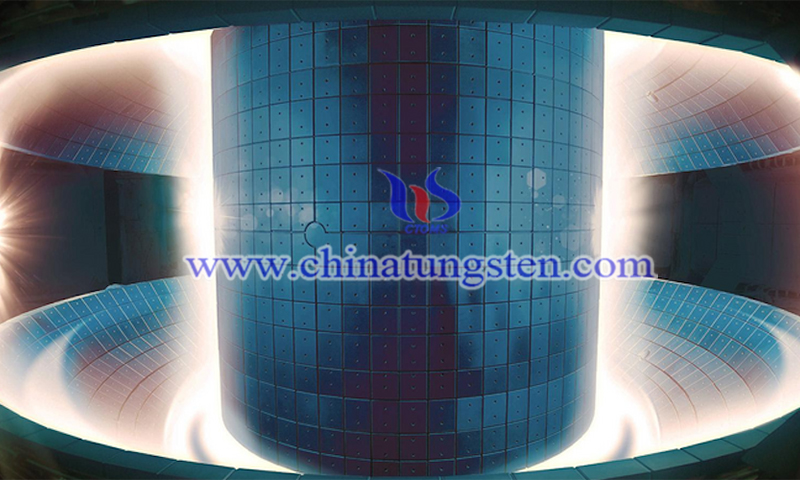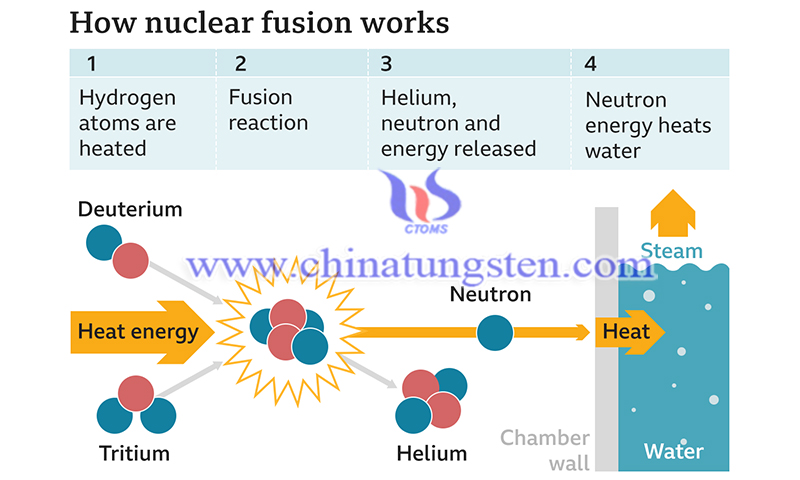How Tungsten Can Help Make Nuclear Fusion Energy A Reality
- Details
- Category: Tungsten's News
- Published on Monday, 03 April 2023 19:09
Researchers at Pacific Northwest National Laboratory (PNNL) and Virginia Polytechnic Institute and State University are using tungsten (W) materials research to achieve the goal of generating energy through nuclear fusion. In the paper, published in the journal Scientific Reports, the researchers propose improving tungsten heavy alloys by mimicking the structure of sea shells to make nuclear fusion energy.
Jacob Haag, the paper's first author, explains that the sun's core temperature is about 27 million degrees Fahrenheit - driven by nuclear fusion. Therefore, the amount of heat generated by the fusion reaction is enormous. This means that before scientists can use fusion energy as a power source, they need to create advanced fusion reactors that can withstand the high temperatures and radiation conditions that come with fusion reactions.

(Picture credit: Composite image courtesy of the Korea Institute of Fusion Energy)
W is an element with one of the highest melting points, which makes it the most attractive material for use in fusion reactors. However, the metal can also be very fragile. Mixing it with small amounts of other metals, such as nickel and iron, can form alloys that are tougher than W alone and maintain a high melting point temperature.
According to Haag, the properties of these W heavy alloys come not only from their composition - thermomechanical treatment of the material can also alter properties such as tensile strength and fracture toughness. A special hot rolling technique produces a microstructure in W heavy alloys that mimics the microscopic structure of mother-of-pearl in sea shells. The PNNL and Virginia Tech teams investigated the role of these W heavy alloys, which mimic mother-of-pearl, in potential nuclear fusion applications.
To get a closer look at the microstructure of the alloy, Haag and his group used scanning transmission electron microscopy to observe the atomic structure. They also used a combination of energy dispersive X-ray spectroscopy and atom probe tomography to map the nanoscale composition of the material interface.

(Picture credit: www.bbc.com)
Within a structure similar to a mother-of-pearl shell, W heavy alloys consist of two distinct phases: a "hard" phase of almost pure W and a "ductile" phase containing a mixture of nickel, iron and tungsten. The results show that the high strength of the W heavy alloy results from the excellent bonding between the different phases, including the tight bonding of the "hard" and "ductile" phases.
"While the two distinct phases create a tough composite, they pose significant challenges in preparing high-quality specimens for characterization," Wahyu Setyawan, a PNNL computational scientist and co-author of this paper, said in a news release. "Our team members did an excellent job in doing so, which enable us to reveal the detailed structure of interphase boundaries as well as the chemistry gradation across these boundaries."
This study demonstrates how crystal structure, geometry and chemistry contribute to strong material interfaces in tungsten heavy alloys. It also reveals mechanisms for improving material design and properties for make nuclear fusion energy. "If these duplex alloys are to be used inside nuclear reactors, it will be necessary to optimize them to ensure safety and longevity," Haag said.
Reference: https://www.mining.com/how-tungsten-can-help-make-nuclear-fusion-energy-a-reality/
- Tungsten Manufacturer & Supplier, Chinatungsten Online: www.chinatungsten.com
- Tungsten News & Prices of China Tungsten Industry Association: www.ctia.com.cn
- Molybdenum News & Price: news.molybdenum.com.cn
- Tel.: 86 592 5129696; Fax: 86 592 5129797; Email: sales@chinatungsten.com



 sales@chinatungsten.com
sales@chinatungsten.com